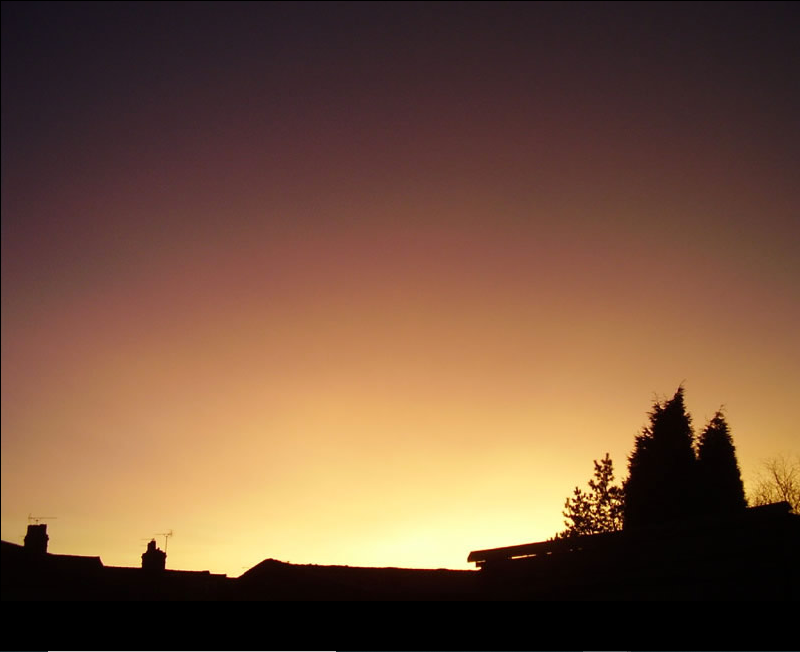Today's Feature Incredible Twilights
Today's Feature: Incredible Twilights
Twilights are a phenomenon that has captivated humans for centuries. The ethereal beauty of the sky transitioning from day to night has always been a source of wonder and inspiration. Recently, the UK, The Netherlands, Germany, and Scandinavia have been treated to a series of twilights that are truly extraordinary. These twilights have been characterized by their unusual brightness and intensely vibrant colors, leaving observers in awe.
One possible explanation for these incredible twilights is volcanic activity. When volcanoes erupt, they release large amounts of dust and ash into the atmosphere. Some of this volcanic debris can reach the stratosphere, where it scatters sunlight and creates stunning twilight displays. However, in this particular case, volcanic activity seems less likely to be the cause.
A more plausible explanation for these remarkable twilights lies in the Earth's atmosphere itself. Europe has been experiencing cold anticyclonic weather, which could have led to a buildup of tropospheric haze and aerosols. These atmospheric particles can scatter sunlight and contribute to the vibrant colors observed during twilight. The combination of cold weather and atmospheric conditions may have created the perfect canvas for these awe-inspiring displays.
However, there is another, more intriguing possibility. The intense colors and brightness of these twilights could be attributed to a specific type of cloud known as Type I polar stratospheric clouds (PSCs). These clouds form at very high altitudes and require exceptionally low temperatures to develop. Over the past day or so, the conditions have been ideal for the formation of these rare PSCs, which could explain the stunning twilights witnessed across Europe.
To fully appreciate the beauty of these incredible twilights, it's essential to understand the science behind them. When sunlight passes through the Earth's atmosphere, it undergoes a process called scattering. This scattering occurs when particles or molecules in the atmosphere redirect the light in different directions. The type and size of these particles determine the colors we see during twilight.
During twilight, the Sun is below the horizon, and its light has to pass through a greater distance of the Earth's atmosphere. This extended path allows for more scattering to occur, resulting in the vibrant hues that characterize twilights. The scattering of sunlight by aerosols, haze, and PSCs can create a breathtaking palette of colors ranging from deep oranges and pinks to purples and blues.
It's important to note that the intensity and colors of twilights can vary depending on several factors. These include the altitude of the observer, the presence of atmospheric pollutants, and the geographical location. Each twilight is a unique spectacle, influenced by the specific atmospheric conditions at that moment.
To capture the beauty of these incredible twilights, photographers often use specialized techniques. Long exposure photography allows for a more pronounced representation of the colors and subtle changes in the sky during twilight. By adjusting camera settings and experimenting with different angles, photographers can create stunning visual compositions that convey the enchanting atmosphere of these moments.
In conclusion, the recent series of incredible twilights witnessed in Europe has left observers in awe of nature's artistry. While volcanic activity and atmospheric haze may contribute to these displays, the formation of Type I polar stratospheric clouds seems to be the most likely explanation. Regardless of the cause, these twilights serve as a reminder of the beauty and complexity of our atmosphere. As we continue to study and appreciate atmospheric optics, we deepen our understanding of the world around us and gain a greater appreciation for the wonders that unfold above us each day. So, keep your eyes to the sky and be prepared to be amazed by the magic of twilight.

Incredible Twilights
Imaged 18th February by Kevin Boyle at Newchapel Observatory in England
The UK, The Netherlands, Germany and Scandinavia are experiencing a series of unusually bright and intensely colourful twilights.
Glorious twilights are sometimes caused by volcanic dust ejected into the stratosphere where the small particles scatter the high altitude sunlight.
Europe's cold anticyclonic weather could have caused a build up of tropospheric haze and aerosol that might have enhanced the twilight.
Another and now more likely explanation is light scattering by very high and thin TypeI polar statospheric clouds, PSCs. They require exceptionally low temperatures to form and these conditions have existed over the last day or so.
Image ©Kevin Boyle, shown with permission.
Note: this article has been automatically converted from the old site and may not appear as intended. You can find the original article here.
Reference Atmospheric Optics
If you use any of the definitions, information, or data presented on Atmospheric Optics, please copy the link or reference below to properly credit us as the reference source. Thank you!
-
<a href="https://atoptics.co.uk/blog/todays-feature-incredible-twilights-2/">Today's Feature Incredible Twilights</a>
-
"Today's Feature Incredible Twilights". Atmospheric Optics. Accessed on November 26, 2024. https://atoptics.co.uk/blog/todays-feature-incredible-twilights-2/.
-
"Today's Feature Incredible Twilights". Atmospheric Optics, https://atoptics.co.uk/blog/todays-feature-incredible-twilights-2/. Accessed 26 November, 2024
-
Today's Feature Incredible Twilights. Atmospheric Optics. Retrieved from https://atoptics.co.uk/blog/todays-feature-incredible-twilights-2/.